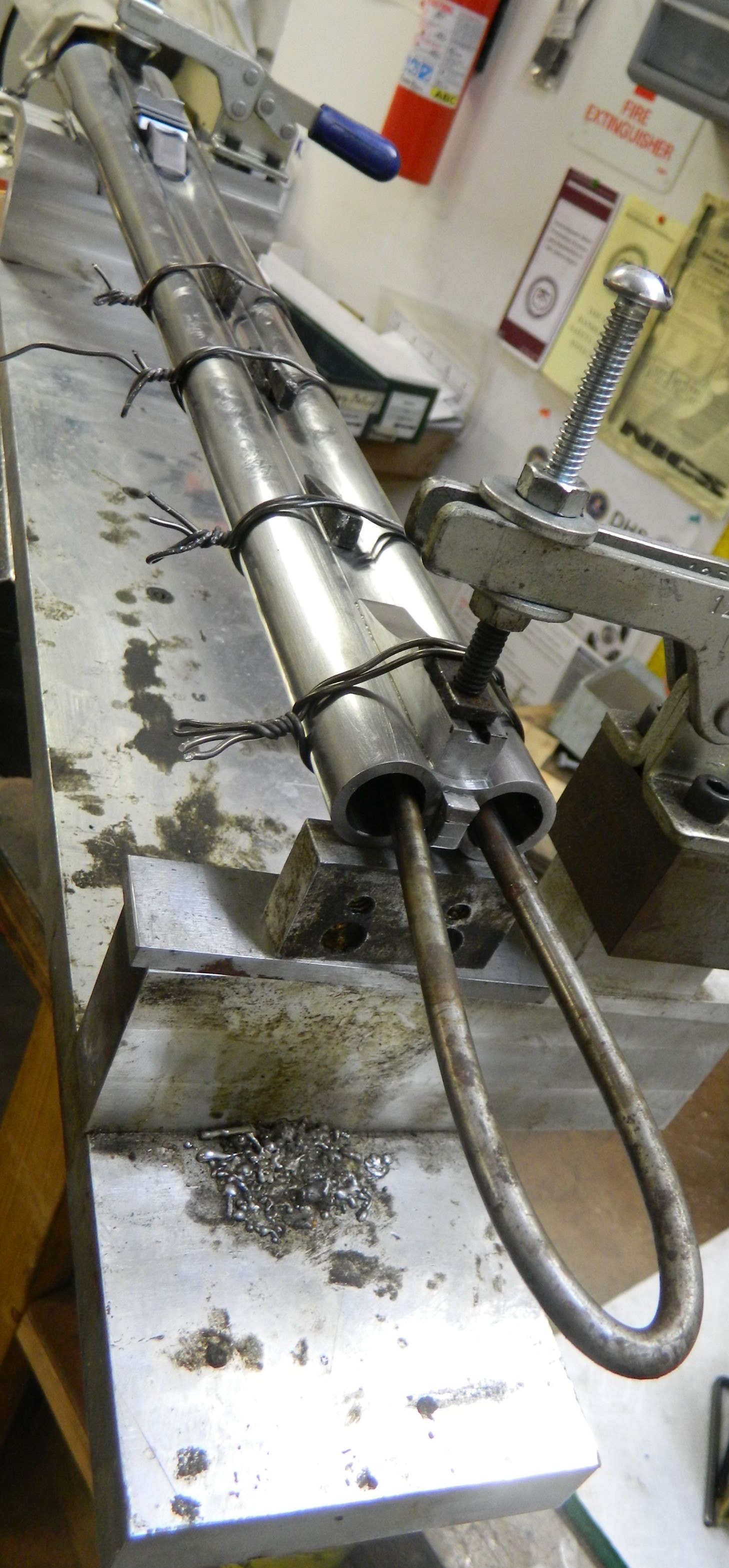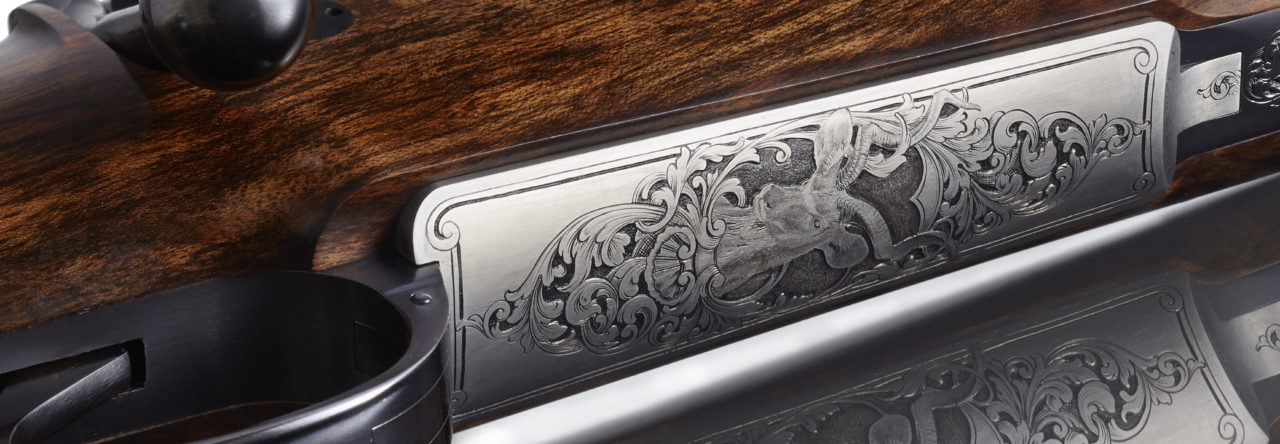The regulation of double rifles seems to be an issue of interest to many gun enthusiast. A double rifle has one set of sights and two barrels that are regulated to the same point of impact, so that the sights are aligned with either barrel. The regulation is accomplished with a tapered wedge between the barrels at the muzzle end. When building the barrel set, the barrels are brazed together at the rear and meet, when looking through each, at a point of impact determined by the experience of the barrel maker. They are therefor not parallel aligned, but angled to each other. When regulating, the barrel set is heated up until the solder melts. Depending on the caliber, I apply heat with a torch from the muzzle to about 6 -9″ back. Once the temperature is reached, the wedge can be driven in to spread the barrels further. Or pulled out to bring the muzzles closer to each other. These adjustments will have a direct impact on the grouping of the two barrels. The barrels literally are getting slightly bend during this process. This is normal. Ideally the barrels are joint at the breech in a way that only very minor adjustments have to be made.
The goal is that the barrels group at 50 yds as close as possible together without them crossing. It is wise to verify the regulation before bluing also at a longer distance.

The picture above is of a .470 NE barrel set that I put together a while ago. The chopper lump barrels are brazed together, the hooks machined and the ribs are fitted and await soldering.

This barrel set is ready for regulation. In this case it is prepared to have the wedge pushed in further, in order to slightly spread the barrels. I have seen many different regulation fixtures from different shops. This set up works for me, and I can adapt it easy for different regulation situations. Careful measurements are taken before and after regulation. The elevation of a individual barrel I change with feeler gauges laid under the muzzle area of the barrel.
The regulation is really not a complicated undertaking. But it requires time and labor and several trips to the shooting range. Large calibers are easier to regulate and are not very sensitive. Small and fast calibers can try a regulators patience. I remember having difficulties years ago in Switzerland with a .22 Hornet double rifle. I must have lost a few hairs then already 🙂
It is always advisable to purchase a lifetime supply of ammo with the same lot number. If the ammo is changed, more likely then not the regulation will be off for the new loads.
These days I have become a bit recoil shy, so I usually don’t take on re-regulation work.
